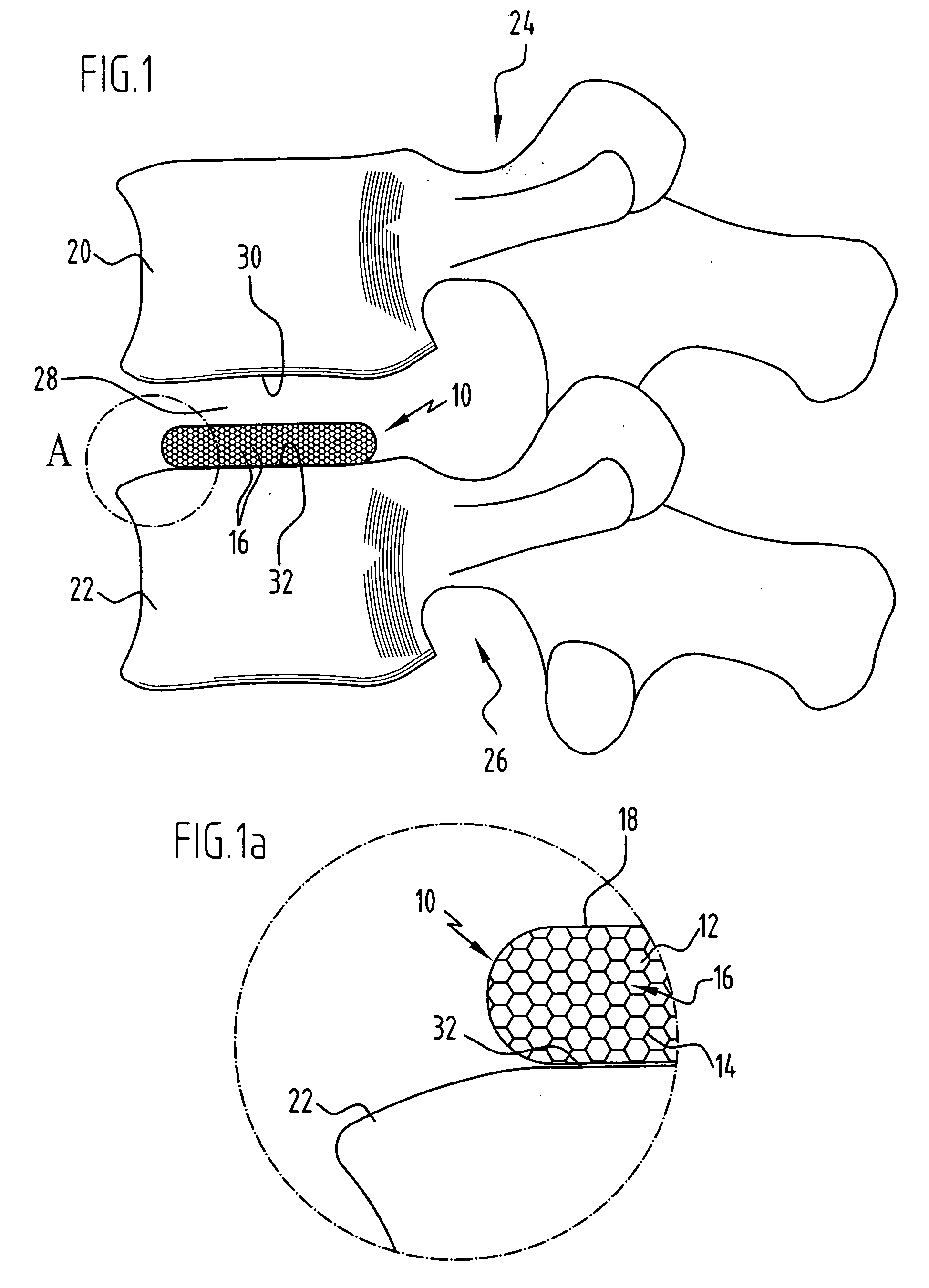Implant
a technology of implants and proximal implants, applied in the field of implants, can solve the problems of not being suitable for intervertebral implants, cannot be inserted in a minimally invasive manner, and their size, and achieve the effect of reducing the healing period and being simple to produ
- Summary
- Abstract
- Description
- Claims
- Application Information
AI Technical Summary
Benefits of technology
Problems solved by technology
Method used
Image
Examples
Embodiment Construction
[0030]FIGS. 1 and 2 show an implant according to the invention, given the overall reference 10, in the form of an intervertebral implant for replacement of a completely removed natural intervertebral disc. The implant 10 has a sponge-like structure, i.e. it comprises a plurality of cavities 12, which are enclosed by chamber walls 14 and thus form a plurality of implant chambers 16, as is clearly evident in FIG. 1a. The implant chambers 16 are each in fluidic connection with implant chambers 16 adjacent to them. An outer surface of the implant 10 is covered with a film 18 of polylactide, which thus forms a sheath for the implant as a whole.
[0031] The implant 10 is elastic overall, in particular the chamber walls 14 are formed from a bioresorbable material, e.g. collagen, gelatine, a polymer nonwoven, a polymer foam, hyaluronic acid, a hyaluronic acid derivative or a mixture of two or more of the named materials. The cavities 12 are shown with a honeycombed form in the figures. Irreg...
PUM
| Property | Measurement | Unit |
|---|---|---|
| volume | aaaaa | aaaaa |
| volume | aaaaa | aaaaa |
| average volume | aaaaa | aaaaa |
Abstract
Description
Claims
Application Information
 Login to View More
Login to View More - R&D
- Intellectual Property
- Life Sciences
- Materials
- Tech Scout
- Unparalleled Data Quality
- Higher Quality Content
- 60% Fewer Hallucinations
Browse by: Latest US Patents, China's latest patents, Technical Efficacy Thesaurus, Application Domain, Technology Topic, Popular Technical Reports.
© 2025 PatSnap. All rights reserved.Legal|Privacy policy|Modern Slavery Act Transparency Statement|Sitemap|About US| Contact US: help@patsnap.com



